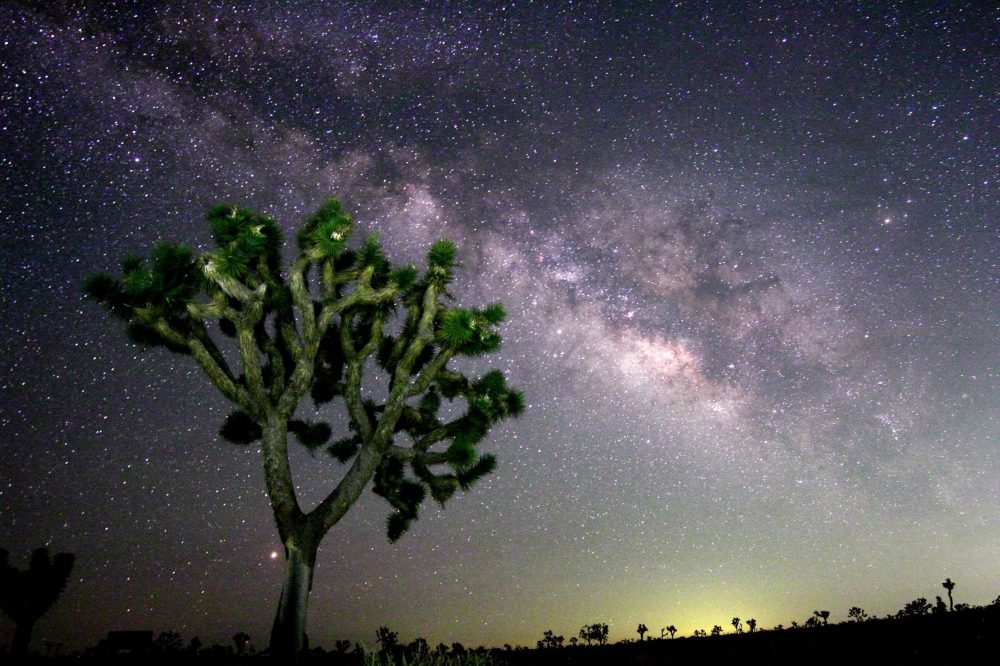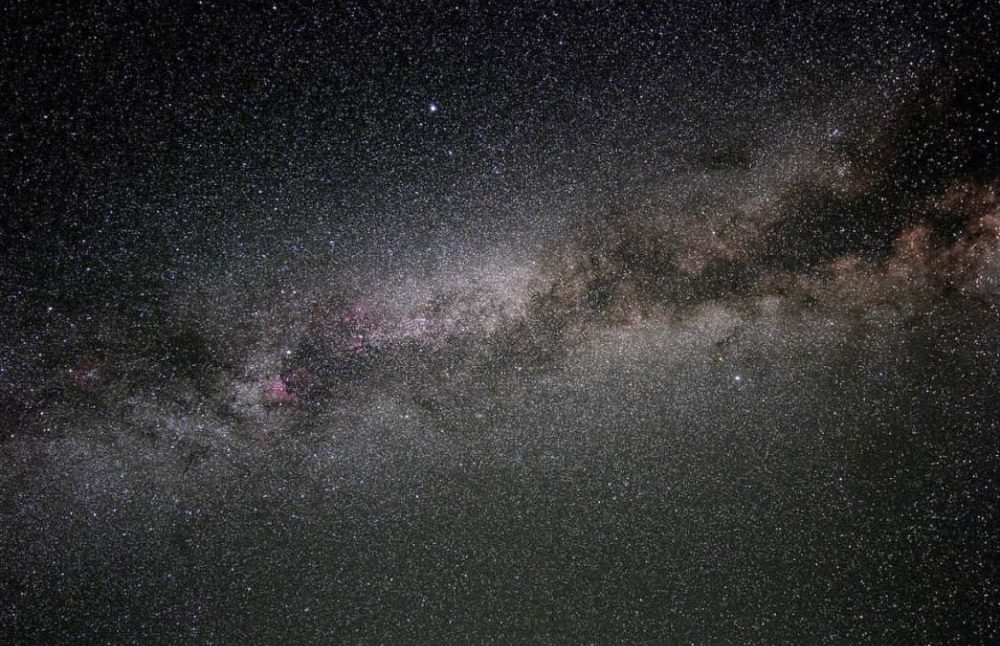Joshua Tree National Park is one of the best spots in the world for stargazers and astronomy buffs, thanks to its designation as an International Dark Sky Park.
As summer temps start to cool, it’s an ideal time to visit AutoCamp Joshua Tree for a getaway under the Milky Way. The golden light of autumn illuminates the park and landscape during the day, giving way to clear skies that are perfect for picking out planets and constellations.
We’ve rounded up tips on making AutoCamp Joshua Tree your stargazing home base, including a Q&A with local expert Steve Caron, of 29 Palms Astronomy Club, on what to look for in the Autumn skies.
Our Favorite Ways to Stargaze
One of Joshua Tree’s most famous daytime spots, Skull Rock is worth a stop after sunset. The ancient desert formation looks magical silhouetted against the Milky Way, and it’s conveniently located close to the roadside with plenty of parking spots.
For seeking out constellations alongside the iconic Joshua trees themselves, make plans for an after-dark visit to Cap Rock, another easy-to-access option that includes a short trail and picnic areas. Further afield there’s the Ocotillo Patch, a sheltered valley that offers panoramic views amid the striking Ocotillo shrubs.

Stay closer to your luxe AutoCamp Joshua Tree accommodations and savor a nightcap from the Clubhouse bar around the communal fire, with plenty of stars in sight. Join us on Friday nights to hear local musicians play under the open sky, the perfect way to appreciate the stunning natural beauty of the high desert.
More Astronomical Events
Plan ahead to attend Joshua Tree’s Night Sky Festival, held every year in September. Tickets are limited, and they go on sale early in the summer, so it’s never too early to plan your return trip to AutoCamp Joshua Tree.
There’s plenty to do outside of the festival, like taking in the huge Harvest Moon. Closest on the autumnal equinox, the lunar sight is something to behold above the wide-open desert horizon.
Or, join us for a special Harvest Moongazing experience, featuring tunes by Other Desert Radio. Hosted by local night sky guide Steve Caron (read our Q&A with him below!), it’s a fun and educational way to relax, do some moongazing, and learn to identify Saturn and Jupiter amid the stars.
Q&A With Astronomer Steve Caron: Tips for Viewing the Joshua Tree Skies
Astronomer and astrophotographer, Steve Caron, of 29 Palms Astronomy Club (an organization that does educational public outreach astronomy and private stargazing tours) shared with us his favorite ways to view the Joshua Tree night skies.
At this time of year, what planets are visible in the night sky?
Looking Southeast shortly after sunset, you’ll get the best view of Saturn and Jupiter. When the planet is in opposition (or opposite the sun), it’s at its closest point to the Earth and visible all night long. Saturn was in opposition in August last month and Jupiter is in opposition now, making this an amazing time to planet gaze.
What constellations are the most prominent in early autumn?
In early Autumn months, you’ll get a good view of the summer constellations. At the center of the Milky Way, to the South and to the West, you’ll find Scorpio and Sagittarius (part of the Zodiac). These are some of the best constellations in the sky—easy to spot and very bright.
The Big Dipper can also be found looking toward the Northwest in early Autumn. It’s easy to spot, just look for the soup ladle that sticks out in the night sky! Another constellation that’s easy to find is Cassiopeia, located near the big Dipper, but on the Northeast side of the sky.

In a really dark area, you can find the Milky Way, a beautiful band of light that spans North to South across the sky. It’s a line from Cassiopeia through the Northern Cross and in between Sagittarius and Scorpio.
Directly overhead at this time of year, you can also easily spot the Summer Triangle, made up of three bright stars called Vega, Altair, and Deneb.
What are your favorite local spots to go stargazing?
Joshua Tree National Park has great locations. Some favorites to bring groups are: Quail Springs, Cap Rock, Skull Rock, Twin Tanks Trailhead, or Hidden Valley. Each spot is surrounded by rocks, iconic Joshua trees, and has picnic tables or bathrooms nearby.
What tips do you recommend to make the most of a stargazing experience?
The best time to stargaze is when there’s no moon out since the light of the moon detracts from the night sky. Go when it’s a New moon or First Quarter Moon—the sky is blazing with stars and the Milky Way is visible. If it is a full moon, it will light up the desert landscape in an incredible way. Both are totally different experiences, but equally amazing.
What’s your favorite way to view the full moon?
I recommend viewing a desert full moonrise, it lasts a total of three nights. The first night it rises before sunset, the next during twilight, and the last is after it’s completely dark on the horizon. You’ll see amazing colors during each night as the moon rises between the hills, Joshua trees, and peaks out between the rocks.

There’s no better time to put these tips to use. Plan your stay and take advantage of the cooler temps and fall happenings at AutoCamp Joshua Tree—and don’t forget to bring your sense of wonder!
